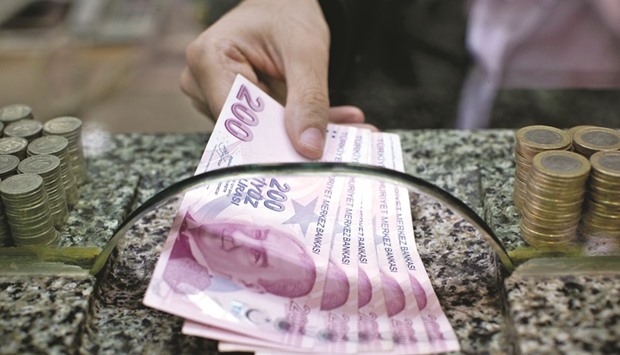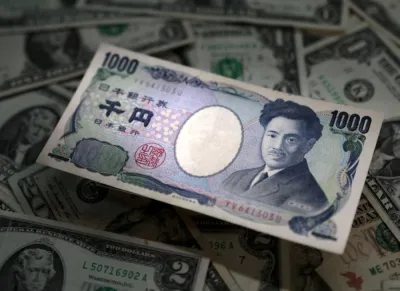Turkey’s lira is on the cusp of losing the backing of one of its most loyal groups of investors: the people of Turkey.
The country’s citizens and businesses swooped in to buy liras this year amid political upheaval, a botched military coup and a spate of debt downgrades. While the currency fell more than any other emerging market outside of Latin America, Turks bought enough to help it rebound each time it dropped toward 3.10 per dollar.
That may be about to change. After transferring $16bn out of their dollar and euro accounts since May, local investors will be less inclined to draw down these deposits, according to Nomura International and UBS. Both banks see the lira weakening by year-end in part because it won’t be anchored by local demand as the Federal Reserve raises interest rates.
“Turks have time and again seen their savings being wiped out by devaluations, so that’s an incentive to keep some savings in hard currencies,” said Inan Demir, an emerging-markets economist at Nomura in London, who forecasts the lira will drop to 3.27 per dollar by December 31. “One of the reasons that I have a bearish forecast for the lira has been my expectation that residents would begin buying foreign currency again to replenish their reserves.”
Demir isn’t the only bear. The median estimate of 33 analysts surveyed by Bloomberg is for the depreciation to accelerate in the coming year.
Local depositors have a lot of firepower to influence the lira’s direction because they hold $144.5bn in foreign deposits, according to central bank data. Losing the domestic buffer thus poses a threat to the currency as it comes up against higher Fed interest rates and as the recovery in oil widens Turkey’s current-account deficit.
For Turks whose purchasing power has been undercut in the past three years by a 36% depreciation and inflation surpassing 7%, keeping some deposits in dollars gives them protection against sudden selling in Turkish assets when political turmoil or security risks related to the war in neighbouring Syria flare up.
Other than the Fed and economic outlook, the lira may come under pressure from a possible referendum in 2017 on whether President Recep Tayyip Erdogan should be given more powers, according to Manik Narain, a currency strategist at UBS in London. Foreign-currency deposits fell to 39% this month from 45% 12 months ago, data of the banking regulator show.
“It’s not the best picture out there really,” said Narain, projecting a depreciation to 3.15 per dollar by December and 3.30 by the end of 2017 in part as local investors start rebuilding their hard-currency reserves. One compelling reason to keep cash in liras rather than dollars is the average interest rate a saver got on short-term deposits over the past year it was 11.3%, compensating for the exchange rate’s 6.1% drop. Even if the Fed raises interest rates from 0.25% as expected in December, lira savings accounts will pay more if the Turkish central bank extends a pause on cutting its 8.25% key rate.
“Retail clients might still feel sufficiently rewarded for the foreign-exchange risk with the high interest,” Roxana Hulea, an emerging-market strategist at Societe Generale SA in London said by e-mail.
That probably explains why Turks have been eager to exploit political turmoil this year to buy liras. When Erdogan’s government foiled an attempted overthrow in July, locals were busy buying the currency as fleeing foreigners sent it tumbling the most since 2008. In the three weeks following the crisis, they transferred $11bn out of their hard-currency accounts.
The same happened when a row between Erdogan and then prime minister Ahmed Davutoglu led the premier to resign in May. While the trend continued at a slower pace after Moody’s Investors Service cut Turkey to junk in September, last week Turks starting boosting their foreign deposits again, according to data on Thursday.
It’s more than the savings habits of retail customers that may undermine the lira’s buffer. Turkish businesses had more foreign-exchange debt coming due in the 12 months from July, the latest data available, than they had assets. This shortfall gives them less ammunition to stabilize the currency, according to Nomura’s Demir.
“You will see the blowout of the USD/TRY” when companies start buying back foreign currencies, said Saed Abukarsh, chief money manager at Ark Capital Management Ltd in Dubai, who expects the lira will fall to 3.15-3.20 per dollar within days.

Turkish 200 lira bank notes are exchanged on a currency store counter in this arranged photograph in Istanbul. The currency is on the cusp of losing the backing of one of its most loyal groups of investors: the people of Turkey.


